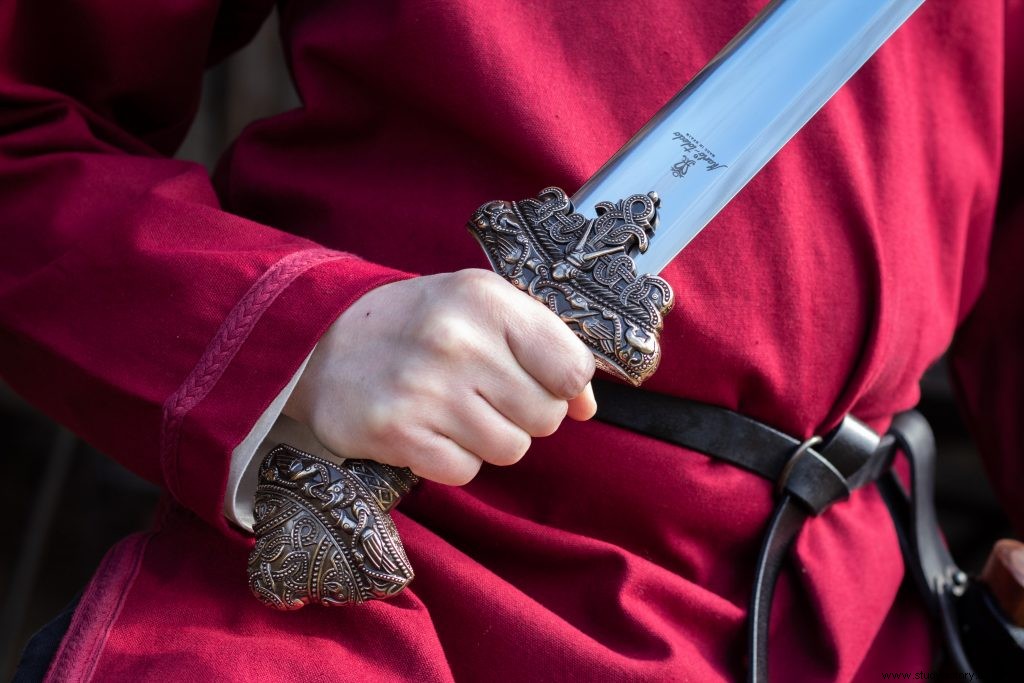Erik the Red is considered the first explorer of Greenland. He is probably nicknamed "the red" because of his magnificent red hair, although his bloody deeds also lived up to his name. In this post you will learn more about the famous Norwegian Viking.
Who was Eric the Red?
Erik "the Red" Thorvaldsson lived from about 950 to 1003 and is described as a quarrelsome and short-tempered person. At the age of 20, he and his family fled Norway after his father committed murder and was exiled. The family settled in Iceland and Erik married a rich man's daughter. With his wife's dowry he established his own farm. Four children were born to him there - including Leif Eriksson, one of the first explorers of America.
Exile from Iceland
Erik got into a fight again, killing two of his Icelandic neighbors at his hands. As a result, he was banned from Iceland for three years. He couldn't stay, and going back to Norway wasn't an option either. But then he had an idea of how he could use the time in exile sensibly. According to the Norwegian Gunnbjörn Úlfsson, there was an uninhabited coast to the west of Iceland.
Erik assembled a crew of just over a dozen men and set out by ship to be the first to explore that island during the period of his exile. He sailed straight west from Iceland and then explored the island. He found fertile land south of Nuuk, today's capital of Greenland, where he and his comrades planted and cultivated their own land.
Erik's Road to Fame
On his return to Iceland, he promoted his explored island, which he called "Greenland" (translated:"green land"). Since this name sounded very promising, he traveled back to Greenland a year after his return with several hundred emigrants, who were spread out on 25 ships, of which only 14 ships actually arrived.
Fish, seals, reindeer and polar bears were hunted. This met the need for food and furs. However, there was a lack of firewood and grain, because these could not be grown profitably. A brisk trade arose. Last but not least, woolly horse teeth were also a valuable commodity.
Over the years, more and more immigrants came to Greenland and Erik became and remained the undisputed ruler of the island. Erik died shortly after the turn of the millennium in 1003, presumably due to an epidemic triggered by travelers.
Eric the Red in Literature
One of the most important historical documents on the life and work of Erik the Red is the Eiríks saga rauða (“Saga of Erik the Red”). Two versions have survived, each from the 14th and 15th centuries. Since the saga was written several centuries after Erik's creative period, its content is not reliable. In addition, the descriptions are very different from those of the Grænlendinga saga, which also tells about Erik and his son Leif.
Click here for the English version of Eiríks saga rauða.

Viking sword Erik the Red
The Spanish blade manufacturer Marto named one of his swords after the great Norseman:the sword Erik the Red. This is a replica of a Viking sword found in Dybäck. The original is in the Historical Museum in Stockholm. When it was found, the locket was rusted to the handle. Although it was once two pieces, of course, this "fused" construction has been retained in the replica.
The handle, elaborately decorated with relief figures, is made of bronzed cast metal. The blade of the sword is forged from AISI 440 stainless steel and polished to a full finish.
The sword was made by Marto in Toledo, Spain, the traditional city of blades. Marto products bear the “Hecho en Toledo” (“Made in Toledo”) seal of quality, which stands for centuries of experience in blacksmithing.
Note:Although the sword is very robust and of high quality, it is purely a decorative sword.
